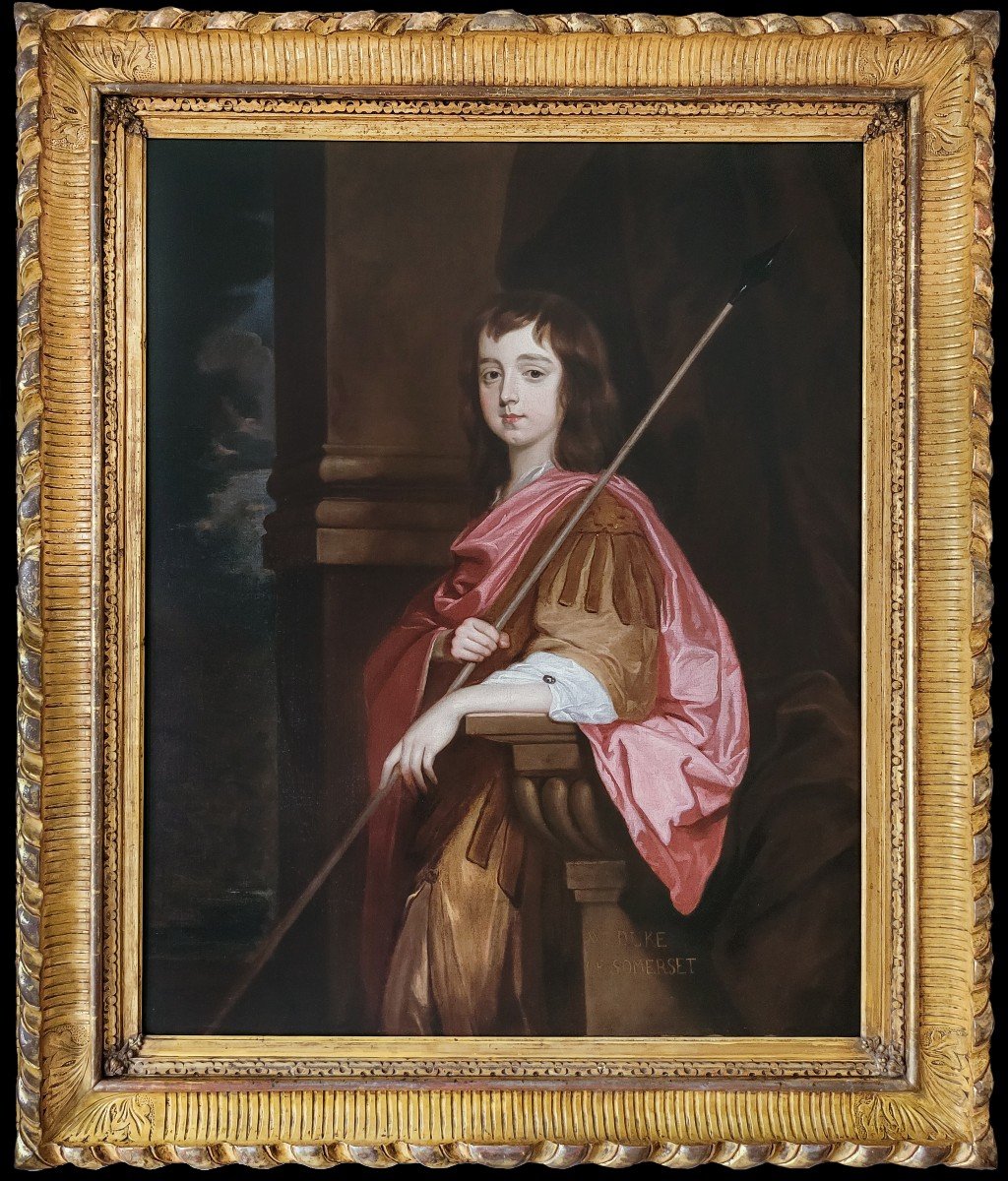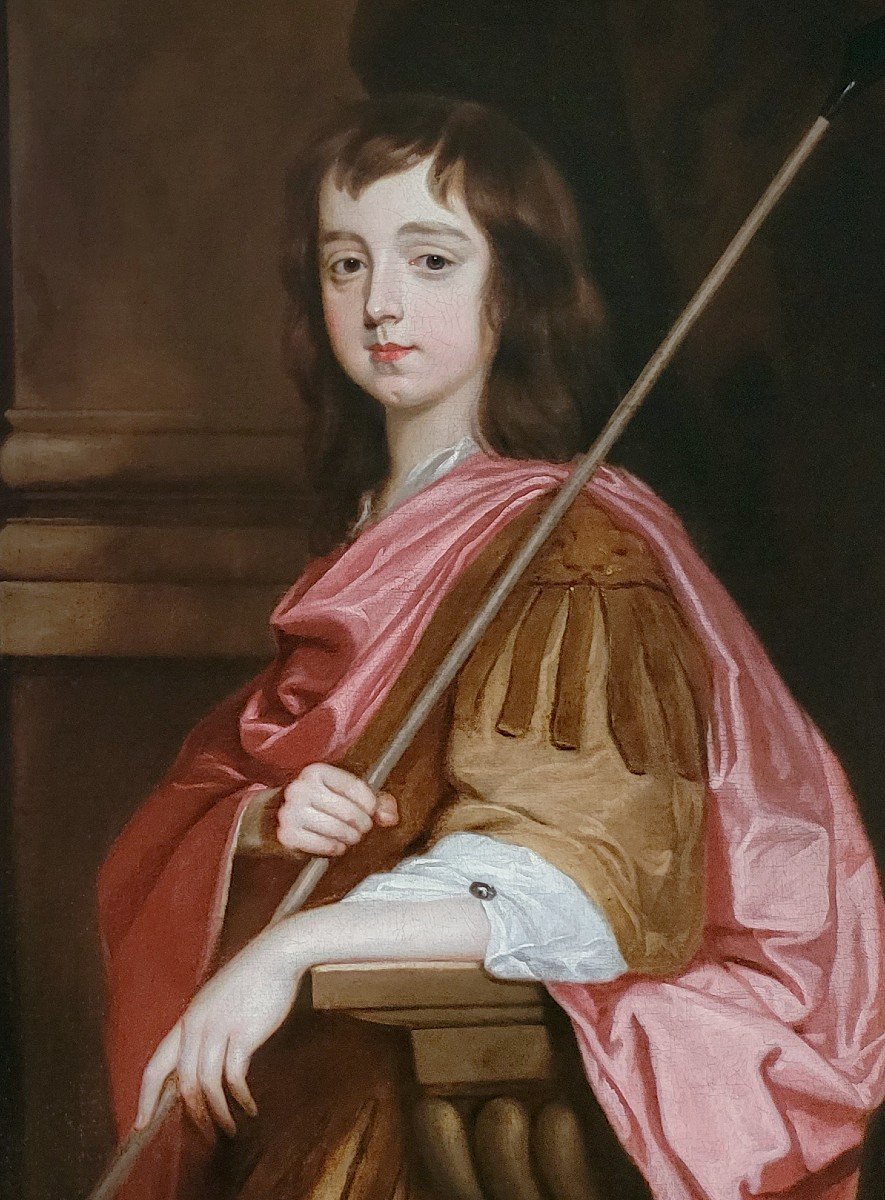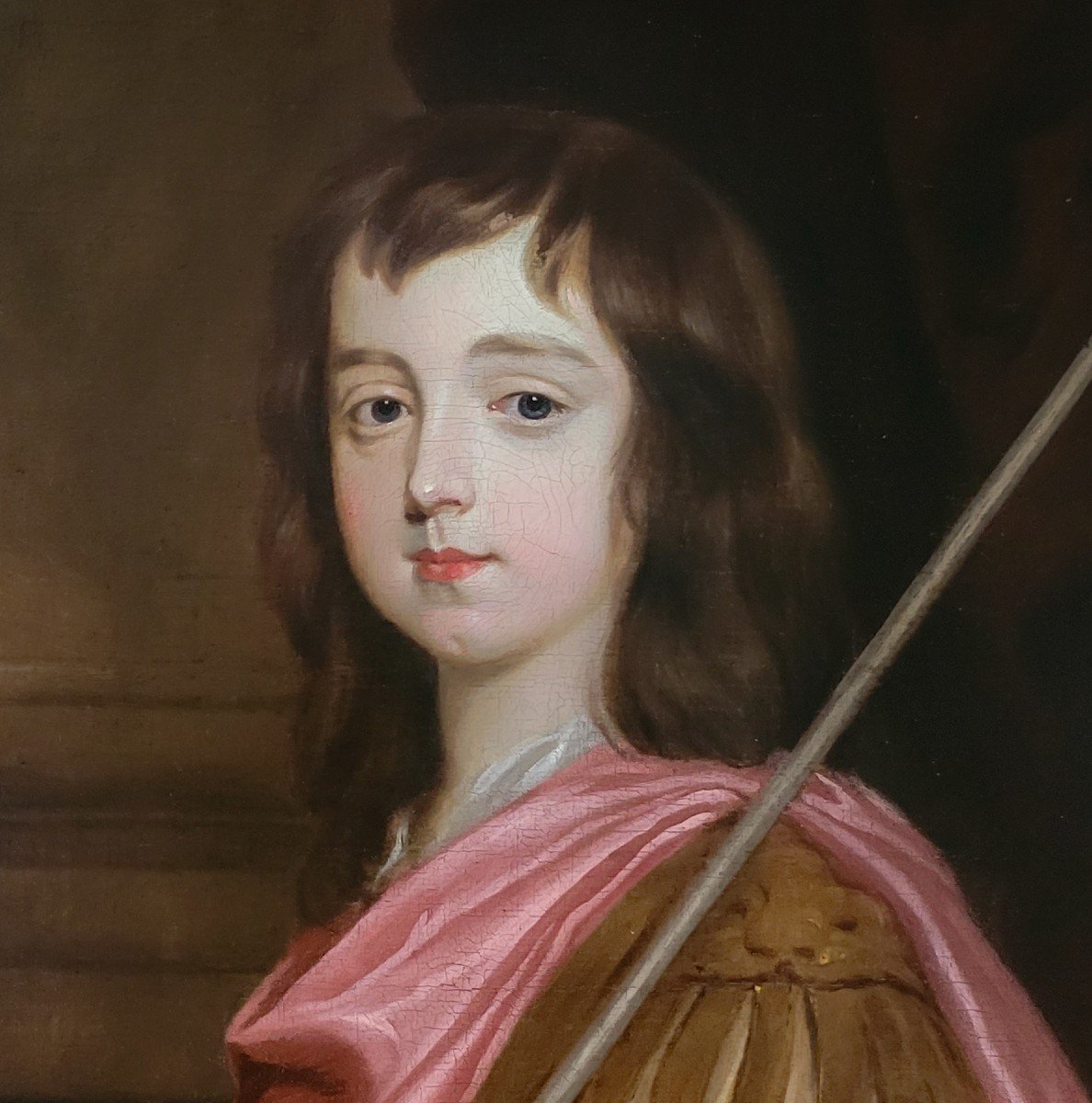"Portrait Of A Gentleman, William Seymour, 3rd Duke Of Somerset C.1658; Studio Of Peter Lely"
Portrait Of William Seymour, 3rd Duke Of Somerset (1652-1671) C.1658Studio Of Sir Peter Lely
This exquisite portrait of William Seymour is a product of the studio of the court painter, Sir Peter Lely. The sitter was Duke of Somerset, Marquis of Hertford, Viscount Beauchamp, and Baron Seymour, and he was the son of Henry Seymour, Lord Beauchamp and Mary Capell, sister of the 1st Earl of Essex
The portrait is datable to circa 1658/60. Portrayed standing in a porch with classical architecture, resting one arm on a plinth whilst the other holds a pike, he is shown with the grandiloquence characteristic of a nobleman. The Roman attire was often used in portraits at this time to provide a sense of timelessness and to evoke a sense of Arcadian tranquillity. Rapid changes in fashion made contemporary dress unsuitable as it quickly made portraits look outdated. However attractive a portrait might appear with the sitter wearing the height of fashion, within a decade of the picture being painted the clothes were out of date and therefore made the painting appear out of date. The costume, the classical architecture, and the moody sky evokes an Arcadian setting. By this time all educated individuals were familiar with Latin and Greek poetry and the mere inclusion of such motifs in portraiture were immediately recognised by contemporary audiences.
Duke of Somerset, from the county of Somerset, is a title that has been created five times in the peerage of England. It is particularly associated with two families: the Beauforts, who held the title from the creation of 1448, and the Seymours, from the creation of 1547, in whose name the title is still held. The Seymours were descendants of Edward III (1312-1377). The family resided at Wulfhall, from 1427, the childhood home of Henry VII’s third wife, Jane Seymour, made famous by Hilary Mantel’s historical novel, “Wolf Hall”. By 1572 the Seymours moved to the much larger Tottenham Park leaving Wulfhall abandoned.
Our sitter died unmarried and the great estates, including Tottenham Park and Savernake Forest in Wiltshire (today, it is the only privately owned forest in Britain), passed to his sister, Elizabeth, who married Thomas Bruce, 3rd Earl of Elgin and 2nd Earl of Ailesbury in 1676. Elizabeth also became representative as senior coheir (heir of line) of Princess Mary Tudor, through the families of Grey and Brandon. The Somerset title devolved on John Seymour (c. 1628–1675), the 2nd duke’s fifth and youngest son.
Inscribed lower right with the identity of the sitter.
Another studio version of this portrait is in the collection at Longleat House. Sitters could commission several versions, for their different homes, or as gifts for their children or friends, and many variations made both in the 17th and 18th centuries, by the same hand and others, are not uncommon. Descendants wishing to show their noble lineage (a type of visual genealogy) and contemporary supporters wishing to show their political aspirations also commissioned versions. Of note, is a portrait of “The Duke of Somerset”, which was sold on 18th April 1682 in Lely’s posthumous estate sale after his death (‘Copies after Sir Peter Lely, left in his House at his decease, to be Sold with the rest').
The work is presented in an impressive and unusual carved antique frame – a fine work of art in itself.
Sir Peter Lely’s character and art dominated the art world of the second half of the seventeenth century in England. Everyone of consequence in his age sat to him, and it is in his portraits that we form our conception of English portraiture during the Protectorate and years following the Restoration.
Sir Peter Lely was the son of a Dutch military officer, and was born in at Soest in Westphalia in 1618. He studied in Haarlem before moving to London in 1641, and in 1647 he became a freeman of the Painter-Stainers’ Company. Initially, Lely painted landscapes, religious, and mythological scenes, however, he quickly recognised the strength of the English market for portraiture and this is where he turned his attention. He was employed by the Duke of Northumberland, who had the royal children in his care, and he was able to study the Northumberland Collection of works by Van Dyke and Dobson. By the end of the Commonwealth, he had become the best-known portraitist in England. In 1661 he was appointed Principal Painter to the King, from then on, he maintained a busy and successful practice painting the most elite and influential members of the court and of everyone of importance. His studio was prolific and employed many assistants, as was the common studio method. His success thus meant that he established the basic English portrait style for decades.
Lely was a connoisseur and was known for his own fine art collection. By the end of his life he had assembled one the finest non-princely collections in Europe including more than 25 of Van Dyke’s major English works, Old Masters including Veronese, Titian, Claude Lorrain and Rubens, and a fabulous collection of drawings.
Measurements: Height 145cm, Width 123cm, Depth 10cm framed (Height 57”, Width 48.5”, Depth 4” framed



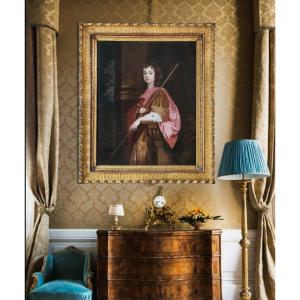
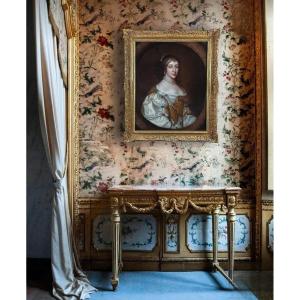
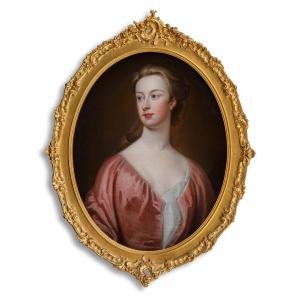

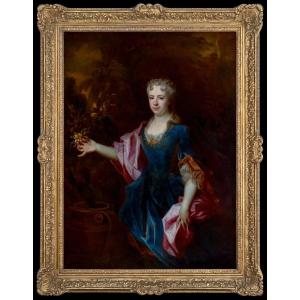




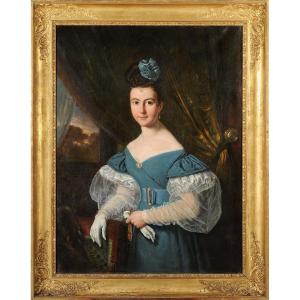

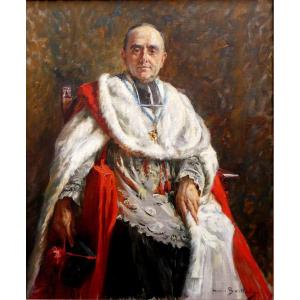
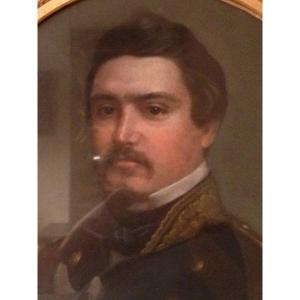




 Le Magazine
Le Magazine Rivista Artiquariato
Rivista Artiquariato TRÉSORS magazine
TRÉSORS magazine


